What is Globally Harmonized System (GHS) for Hazard Communication (HazCom)?
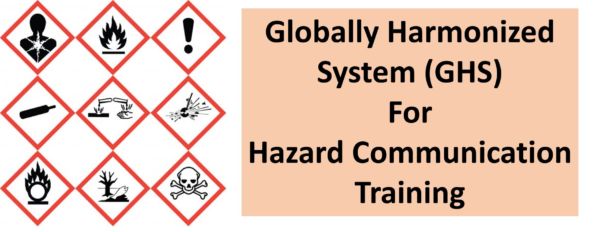 The Globally Harmonized System (GHS) is an international approach to hazard communication, providing agreed criteria for the classification of chemical hazards, and a standardized approach to label elements and safety data sheets. The GHS was negotiated in a multi-year process by hazard communication experts from many different countries, international organizations, and stakeholder groups. It is based on major existing systems around the world, including OSHA’s Hazard Communication Standard and the chemical classification and labeling systems of other US agencies.
The Globally Harmonized System (GHS) is an international approach to hazard communication, providing agreed criteria for the classification of chemical hazards, and a standardized approach to label elements and safety data sheets. The GHS was negotiated in a multi-year process by hazard communication experts from many different countries, international organizations, and stakeholder groups. It is based on major existing systems around the world, including OSHA’s Hazard Communication Standard and the chemical classification and labeling systems of other US agencies.
The result of this negotiation process is the United Nations’ document entitled “Globally Harmonized System of Classification and Labeling of Chemicals,” commonly referred to as The Purple Book. This document provides harmonized classification criteria for the health, physical, and environmental hazards of chemicals. It also includes standardized label elements that are assigned to these hazard classes and categories and provides the appropriate signal words, pictograms, and hazard and precautionary statements to convey the hazards to users. A standardized order of information for safety data sheets is also provided.
What are the Major Changes to the Hazard Communication Standard (HCS) in the USA?
OSHA revised its Hazard Communication Standard (HCS) to align with the United Nations’ Globally Harmonized System of Classification and Labeling of Chemicals (GHS) and published it in the Federal Register in March 2012 (77 FR 17574). Two significant changes contained in the revised standard require the use of new labeling elements and a standardized format for Safety Data Sheets (SDSs), formerly known as, Material Safety Data Sheets (MSDSs). The new label elements and SDS requirements will improve workers understanding of the hazards associated with the chemicals in their workplace.
In order to ensure chemical safety in the workplace, information about the identities and hazards of the chemicals must be available and understandable to workers.
- Hazard classification: Provides specific criteria for the classification of health and physical hazards, as well as the classification of mixtures.
- Labels: Chemical manufacturers and importers will be required to provide a label that includes a harmonized signal word, pictogram, and hazard statement for each hazard class and category. Precautionary statements must also be provided.
- Safety Data Sheets: This Will now have a specified 16-section format.
- Information and training: Employers are required to train workers on the new labels elements and safety data sheets format to facilitate recognition and understanding.
What pictograms are required in the revised Hazard Communication Standard?
A. There are nine pictograms under the GHS to convey the health, physical and environmental hazards. The final Hazard Communication Standard (HCS) requires eight of these pictograms, the exception being the environmental pictogram, as environmental hazards are not within OSHA’s jurisdiction. The hazard pictograms and their corresponding hazards are shown below.
HCS Pictograms and Hazards
Health Hazard
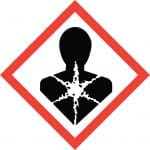
- Carcinogen
- Mutagenicity
- Reproductive Toxicity
- Respiratory Sensitizer
- Target Organ Toxicity
- Aspiration Toxicity
Gas Cylinder
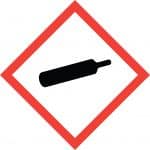
- Gases under Pressure
Flame over Circle
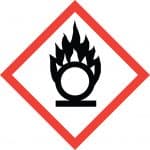
- Oxidizers
Flame
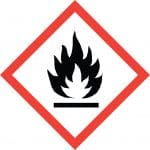
- Flammables
- Pyrophorics
- Self-Heating
- Emits Flammable Gas
- Self-Reactives
- Organic Peroxides
Corrosion
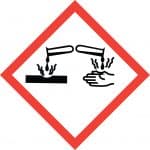
- Skin Corrosion/ burns
- Eye Damage
- Corrosive to Metals
Environment (Non Mandatory)
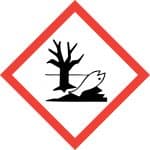
- Aquatic Toxicity
Exclamation Mark
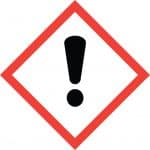
- Irritant (skin and eye)
- Skin Sensitizer
- Acute Toxicity (harmful)
- Narcotic Effects
- Respiratory Tract Irritant
- Hazardous to Ozone Layer
- (Non Mandatory)
Exploding Bomb

- Explosives
- Self-Reactives
- Organic Peroxides
Skull and Crossbones
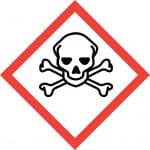
- Acute Toxicity (fatal or toxic)
What is Employer’s Responsibility under GHS to Meet the Compliance Requirements?
- Educate and train workers on the hazards and safe use of products.
- Ensure that hazardous materials are properly labeled.
- Prepare workplace labels and SDSs as necessary.
- Provide access for workers to up-to-date SDSs.
- Ensure appropriate control measures are in place to protect the health and safety of workers.
- Ongoing audit for policy implementation, process, and procedures for GHS.
Cost $25
Register Now for Globally Harmonized System (GHS) Course
Who is required to take this course?
This course is suitable for workers in organizations of all sizes, in industries and occupations where hazardous products are found. Employees working in healthcare, pharma, petrochemicals, oil and gas, construction, manufacturing, and other specialty industries should take this training. Nurse, Medical Courier, Healthcare Workers with exposure to hazardous material.
Benefits of taking Online GHS HazCom training
- Avoid OSHA penalties for noncompliance
- Reduce workplace accidents due to hazardous products.
- Improve workplace safety records
- Potentially reduce the liability insurance premiums
- This will enable the individual to integrate the GHS plan into their workplace
- Will be able to educate and design educational programs for their fellow workers to the element of GHS and how it applies to their job duties
- 24 x 7 access from anywhere for self-paced online courses
- Instantly print or download Nationally Recognized Certificates
- Online course with audio and PowerPoint slides for easy understanding of training
Why are you required to take this training?
Per the final rule issued on March 26, 2012, the Department of Labor has adopted the United Nations’ Globally Harmonized System (GHS) of Classification and Labeling of Chemicals. This change ensures OHSA’s alignment with internationally-developed guidelines for the categorization and labeling of hazardous substances. June 1, 206 Deadline to update alternative workplace labeling and hazard communication programs, and provide any additional employee training.
Employers are required to educate workers on the new Globally Harmonized System (GHS) labeling system for hazardous chemicals as well as how to read and interpret a safety data sheet (SDS).
- All workers must be trained on the chemical hazards they may encounter BEFORE they are exposed to, use, and/or work with the hazardous chemical(s). There is no grace period for this hazard communication training.
- ALL workers are required to be trained on the new label elements and SDS format as part of their employment on an annual basis thereafter.
Cost $25
Register Now for Globally Harmonized System (GHS) Course
Course Overview
Total Course Duration: 30 minutes
Audio: Yes
Number of Total Slides: 53 slides
Online course login expires in: 2 months from receiving the login details. You will not have access to online content after you complete the course.
Certificate valid for: One Year
Type of License: One user license cannot be transferred after login is assigned
Course Outlines
- Introduction & Background
- Hazard Communication & GHS
- Required Elements
- The scope of the GHS
- Three Categories of Hazards
- What are GHS Hazards?
- GHS Physical Hazards:
- GHS Health Hazards
- GHS Environmental Hazards
- Safety Data Sheets
- Role of the SDS in the GHS
- SDS Format: 16 headings
- Labeling
- Label Elements
- Pictograms
- Exclamation Mark
- Health Hazard
- Flame
- Gas Cylinder
- Corrosion
- Exploding Bomb
- Flame over Circle
- Skull & Crossbones
- Environmental
- Summary
Cost $25
Certificate for Continuing Education Credits:
Students can buy a CE credits certificate for this course at the time of registration. You will receive one CE credit for this course through the Approved Provider of California Board of Registered Nursing after completing the course.
Please contact us for more information at Bob@hipaatraining.net or call (515) 865-4591.
Testimonials
- It is extremely beneficial in learning all of the types of hazards and how to handle them.
Steven Yount - Very great class. Informative and the platform is user friendly.
Brooke Keith - Great course. very precise and clear in information
Kelvin Jones - Useful information for safety workplace
TAMAR KHZAALI - This was a great course that discussed relevant material
Saba Saleem - This program was very helpful and informative
Rebecca Lynn Wright - Very helpful and easy to understand!
Nahiyan khandker - Great course! Definitely helpful!
Kryn Bleeker
USER RATING:
The Globally Harmonized System (GHS) for Hazard Communication Training is rated 4.8 out of 5 by 365 users.
